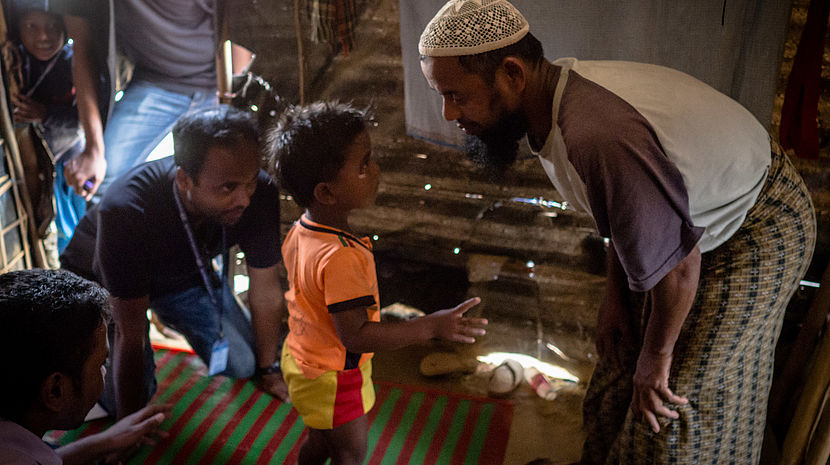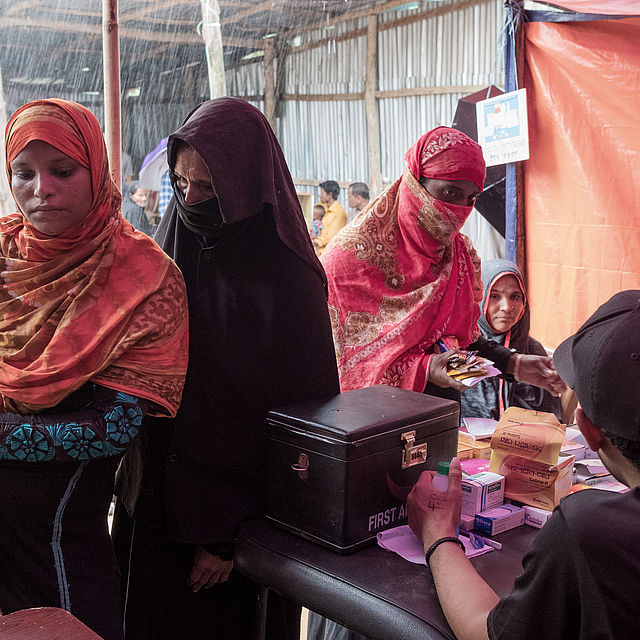The Good Practice Documentation from Rohingya Response in Bangladesh

In response to the Rohingya refugee crisis in Bangladesh in 2017 CBM is working with partner Centre for Disability in Development (CDD) providing non-food items, health/rehabilitation and mental health services. This image shows Haris, a three-year-old boy as he receives physiotherapy.
© CBM
Since August 2017, extreme violence in Myanmar has driven almost 860,000 Rohingya refugees across the border into Cox’s Bazar in Bangladesh. In partnership with the Centre for Disability in Development (CDD), CBM has been providing health and rehabilitation services in the Rohingya camps and host community for four years. Now we are excited to share our documentation on the CBM/CDD model of health and rehabilitation service provision.
Background
The model is based on our continuous learning throughout the past four years and specifically also reflects on the feedback and experiences that clients have shared with us. This documentation is intended to provide a replicable example to be used by other humanitarian health actors to implement integrated health and rehabilitation services which are inclusive and accessible for all persons.
The CBM/CDD health and rehabilitation services within the Cox’s Bazar Refugee Camps includes general health services, eye health services, audiometry, rehabilitation therapy) and mental health and psychosocial support (MHPSS). These services are provided within one static rehabilitation and health center.
Services provided
To complement the static rehabilitation and health center and to reach those unable to come to the center site due to the topography of the camp and other barriers, homebased rehabilitation (HBR) teams, comprising of physiotherapists, occupational therapists and therapy assistants, provide home therapy services. The HBR team specifically targets persons with moderate to severe physical disabilities who are unable to reach the center to ensure that they are able to access therapy services. Homebased rehabilitation services allow for holistic assessment and treatment of a client within their own environment. In a displacement setting where clients are required to travel outside their immediate shelter to complete even some of their basic activities of daily living such as toileting and bathing, as well as access critical humanitarian aid, an understanding of the home environment and barriers are critical to design a relevant rehabilitation program and prescribe assistive devices which are appropriate for the terrain.
Since the health and rehabilitation center has limited capacity to do in-depth diagnostics, to treat more severe illnesses and to conduct surgeries, strong referral systems have been established with field hospitals and primary healthcare centers for diagnostic tests, laboratory work, surgery, higher level consultation and complex treatment needs. Simultaneously, referral pathways exist for medical centers to refer clients to CBM/CDD for post-surgical rehabilitation follow up, provided by the HBR team after a client returns home.
Documentation of the health and rehabilitation model in Cox’s Bazar

A successful approach to disability-inclusive health services under one roof, including homebased rehabilitation and strong referral systems, in a context of mass displacement.
Access the documentation here.